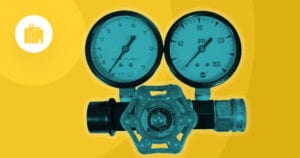
“IoT is about people, not technology.” It’s a one-liner often heard, but what does it really mean? This single sentence makes all the difference between failing and succeeding in an IoT project. In this article, we’ll explain why that is and how it is applied in practice.
If we take a look at current IoT applications, we see many businesses experimenting with IoT technology. The reasoning behind it is often because they see that competitors are also talking about it and are maybe even bragging about how far they are with IoT. In reality, many of these organizations haven’t gotten further than experimenting and rolling out a proof of concept.
By experimenting with devices, doing some prototyping, and rolling out a proof of concept, IoT is approached from a technology perspective. Succeeding in this is not the hardest part as IoT devices are widely available, and many require only a little engineering to get it to work. But that’s also exactly why this approach ends after the proof of concept stage. To go behind that, a different approach is needed.
The Value Approach
As with any other system or service you’re implementing within your organization, the question with IoT is what value it will bring and if it fills in the need or solves a problem you have. Let’s look at the example of a company with a service organization that maintains its customers’ machines. Maintenance is needed when the machine has run for 100 hours, so the organization decides to monitor the machine’s running hours remotely. It seems like the problem is solved by implementing a device that reports the actual running hours, but let’s dive a little deeper into the process.
To plan maintenance, the planner has to be aware of the machines’ running hours. But by only knowing the running hours, the problem is not solved. We can not expect the planner to check the running hours of all machines every day. What the planner actually needs to see is which machines are due for maintenance and when.
Suddenly, the actual amount of running hours and the running hours at last maintenance and knowing how many hours the machine runs per day are needed to plan the next maintenance accurately. This extra information is called metadata. The metadata allows for the planner to give the measured data context. Only with this context, the system has value for the planner. Without this, remote monitoring might have a negative effect: the planner now has another system to watch and check. Instead of adding value, the system is a burden for the planner to do his job.
The planner needs an application that analyses the data, visualizes it, and shows which assets need his attention. When approaching a project with the end goal in mind, we focus on the added value. After that, the IoT technology specs will follow.
All About the People
As the saying goes, a man is only as good as his tools. And this is particularly true for IoT. As the example above shows, value is added by looking closely at the planner and his job and analyzing how he can benefit from technology. In the end, organizations revolve around people. Even if we would have all the world systems, it’s still the people that control them and run the business. Implementing IoT successfully starts by analyzing the needs rather than experimenting with available technologies.




 Related Podcast Episode
Related Podcast Episode




 Related Applications
Related Applications


 Latest IoT News
Latest IoT News









